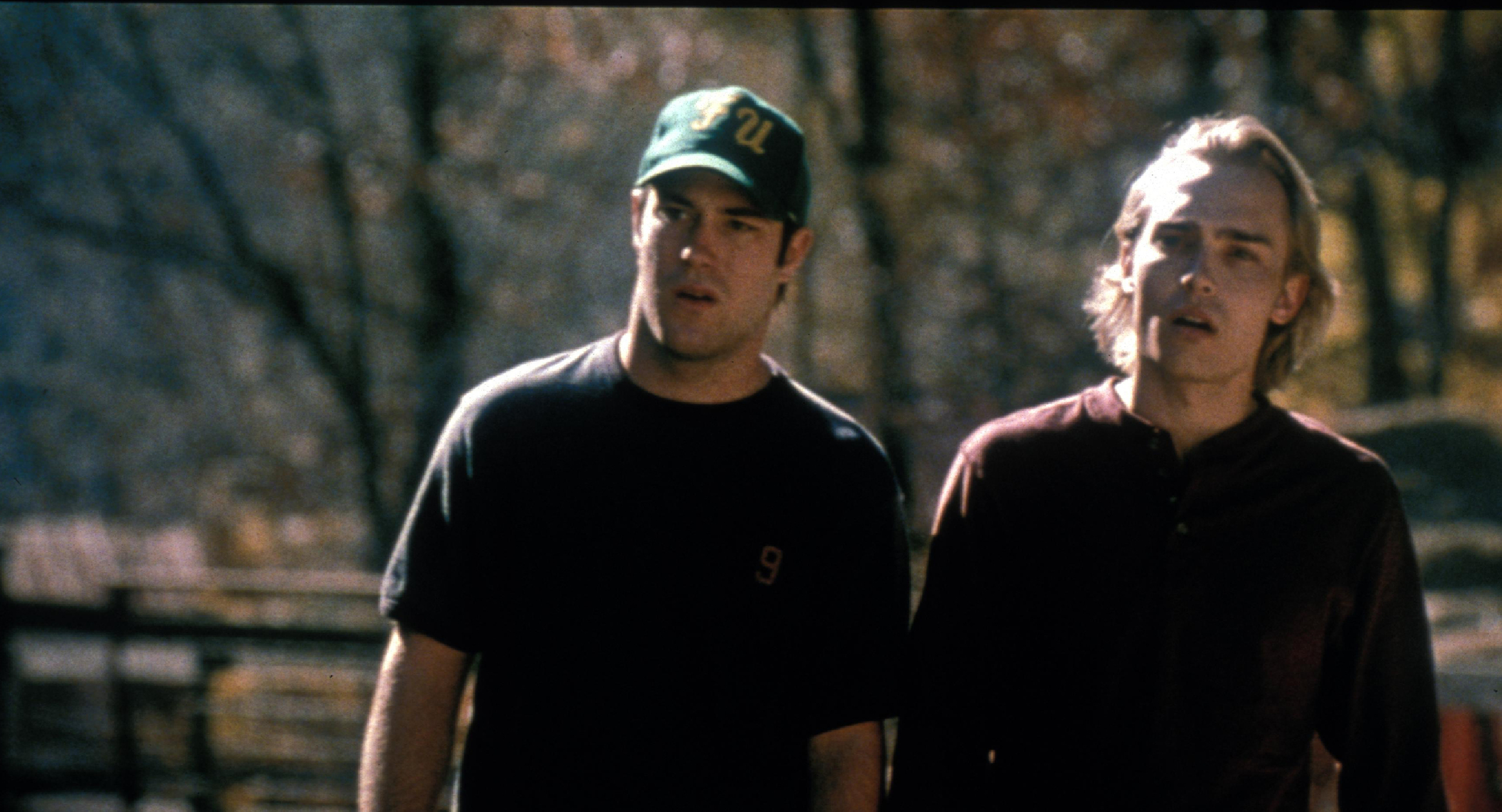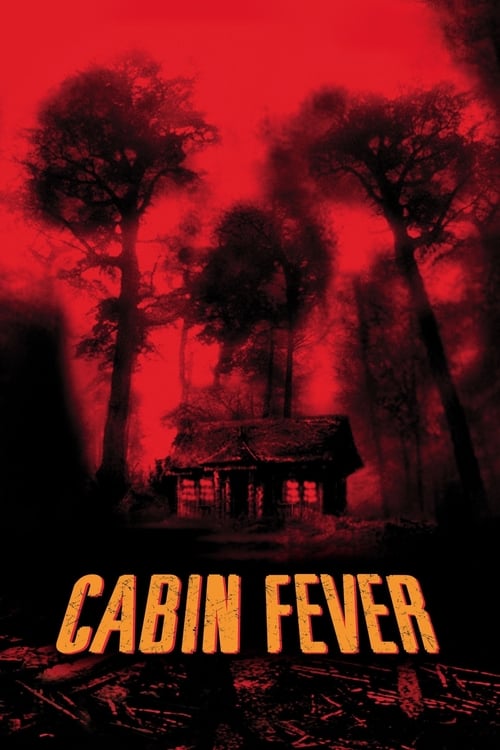Cabin Fever – Film Review
Published July 30, 2023

Bert, a college student vacationing with friends in the mountains, mistakenly shoots a local man with a skin infection while hunting in the woods. Panicking, he abandons the scene and leaves the man for dead. When the man stumbles into a reservoir, he infects the water supply, and soon one of Bert’s friends becomes infected. The friends struggle to stop the contagious, flesh-eating disease while on the run from a group of ornery backwoods locals out for revenge.
Eli Roth‘s Cabin Fever is a divisive horror film that attempts to pay homage to the classic slasher genre while adding its own twist of flesh-eating virus terror. Released in 2002, the movie garnered a mixed reception from audiences and critics alike, and for good reason. While it does manage to deliver some genuinely creepy moments and gruesome visuals, it ultimately falls short of its potential, leaving viewers torn between appreciating its nostalgic elements and critiquing its weaknesses.
The film begins with a familiar setup: a group of five college friends, fresh-faced and ready for a fun-filled vacation, venture into the remote woods to stay at a cabin they rented for the weekend. The cast includes Rider Strong as the sensible Paul, Jordan Ladd as the flirtatious Karen, Joey Kern as the obnoxious Jeff, Cerina Vincent as the bubbly Marcy, and James DeBello as the eccentric Bert. They intend to party, indulge in debauchery, and enjoy their freedom away from societal constraints.
However, their carefree escapade takes a dark turn when a local hermit, played brilliantly by Arie Verveen, stumbles into their campsite one night, visibly afflicted by some mysterious illness. His bloodied, decayed appearance is a foreboding sign of the impending doom that will soon befall our group of naive vacationers. The film begins to unfold like a traditional horror plot, as paranoia and fear slowly consume the characters, leading them down a path of desperation and gruesome confrontations.
One of the strengths of Cabin Fever lies in its effective use of practical effects and gore. Eli Roth’s dedication to creating authentic and visceral visuals is commendable. The gruesome makeup and bloody scenes are skillfully executed, providing a level of realism that is often missing in modern horror movies overly reliant on CGI. The film’s practical effects are undeniably its strongest asset, with the body horror elements leaving a lasting impression on those with strong stomachs.
Additionally, the isolated woodland setting creates an eerie atmosphere that enhances the film’s tension and suspense. The creaking trees, ominous sounds of nature, and the feeling of being cut off from civilization all contribute to the sense of dread that permeates throughout the movie. Roth successfully capitalizes on the inherent fear of the unknown, amplifying it through the characters’ increasing paranoia and desperation.
However, despite these strengths, Cabin Fever suffers from several notable flaws that prevent it from being a truly remarkable horror experience. The most significant issue lies in its lackluster storytelling and character development. While the setup promises intriguing dynamics between the friends, the screenplay fails to capitalize on these opportunities. The characters lack depth and are reduced to mere caricatures of horror movie archetypes. As a result, it becomes difficult for the audience to empathize with their plight or care about their survival.
The film’s dialogue is also a weak point, often teetering between cringe-worthy and unintentionally humorous. The attempts at humor fall flat, and the character interactions feel forced, preventing any genuine emotional investment in their fates. Its disappointing to see a movie with such potential squander it on clichéd and underdeveloped characters.
Another significant flaw lies in the pacing of the film. Cabin Fever starts strong, building tension and setting the stage for an intense horror experience. However, as the movie progresses, the pacing becomes uneven, with moments of slow, meandering scenes that detract from the overall suspense. The narrative’s lack of focus and some unnecessarily prolonged sequences contribute to the film’s bloated runtime, making it feel longer than its actual duration.
Furthermore, the film’s central antagonist, the flesh-eating virus, isn’t adequately explained, leaving audiences questioning its origins and rules. While some degree of ambiguity can work effectively in horror films, Cabin Fever leaves too many unanswered questions, undermining the viewer’s ability to immerse themselves in the story. The lack of a coherent explanation for the virus’s spread and its effects on the characters diminishes the overall impact of the horror elements.
The performances of the cast are also a mixed bag. While they show glimpses of talent, the weak character development limits the actors’ ability to shine. Rider Strong and Jordan Ladd, who play pivotal roles in the story, do their best to bring depth to their characters, but their efforts are hindered by the lackluster screenplay. As a result, the emotional resonance needed to elevate the horror experience is missing.
Eli Roth’s Cabin Fever is an ambitious attempt at resurrecting the classic slasher genre while adding a body horror twist. The film succeeds in delivering gruesome practical effects and establishing an eerie atmosphere, but it falters in its storytelling, character development, and pacing. It is a movie that will appeal to horror enthusiasts seeking a gory spectacle and a nostalgic nod to classic horror elements. However, for those seeking a more well-rounded and emotionally engaging horror experience, Cabin Fever falls short of expectations. While it may find its place among cult horror classics, its divisive nature and notable flaws prevent it from achieving greatness in the genre.
